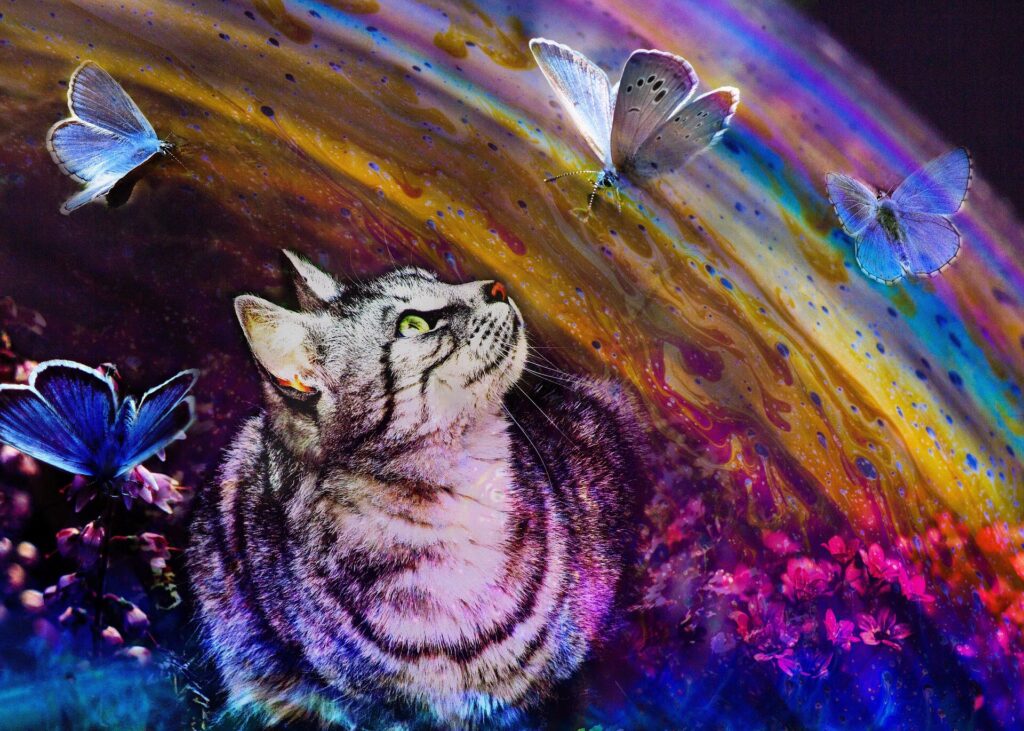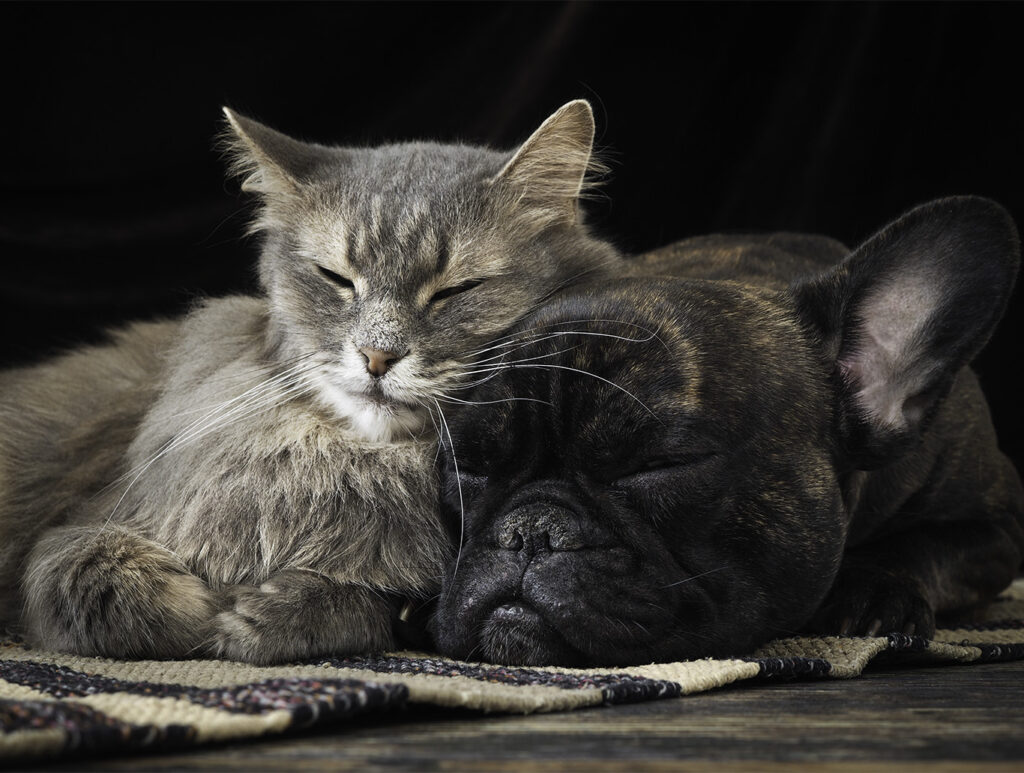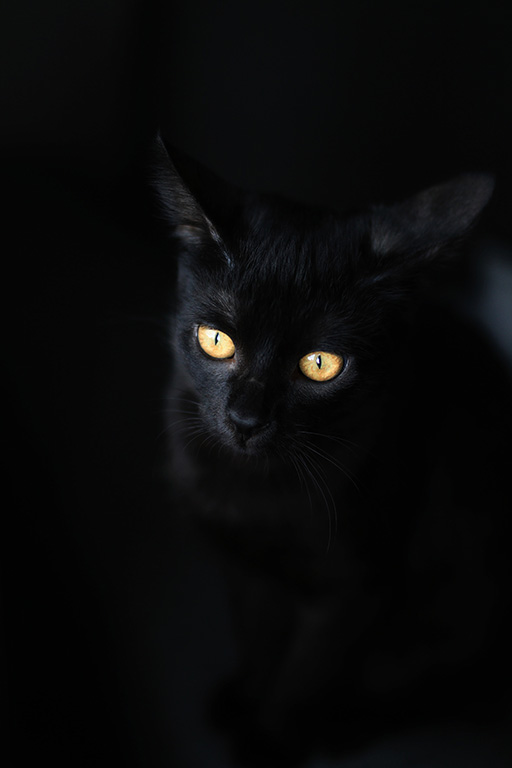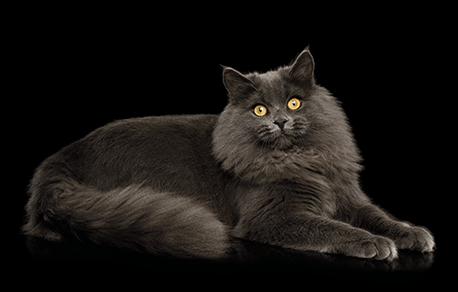My Pet Won’t Eat . . . Why?

Many, if not most of the calls I receive in regard to euthanasia, are because the animal in question is not eating. These are usually older pets and a significant number have been diagnosed with a terminal disease. The general viewpoint espoused is that when a pet stops eating they are “ready” to die. I believe it’s important to understand that animals are never “ready” to die. They are self preservative creatures. They are instinctive about death and they are very good at dying, just like they are very good at living.
How Our Pets Die

Death, or “to die,” is the end for every living being, and we should all understand that life is a finite miracle that will come to a conclusion at some point, no matter what is done to prevent it.
How Pet Euthanasia Is Justified

In my many years as a veterinarian and especially now that I work exclusively with elderly pets, there are three phrases, and one, two or all three of them enter into nearly every conversation I have involving end of life. I finally realized that pet caretakers, as well as veterinarians, use these phrases to give themselves permission to end an animal’s life.
Gabapentin – Cautions & Uses

Gabapentin has analgesic effects and also anticonvulsant activity. The mechanism for its actions is not well understood. It can be a useful medication for the elderly dog or cat, but can also create problems if not used and dosed correctly.
How Our Pets Age

In general terms, the geriatric period for dogs starts around 7 to 9 years of age, and for cats at around 10 years, but these parameters vary depending on species and size. The time frames listed here are certainly not exact and are only used as reference points for discussion.
Injection Site Sarcomas In Cats

Feline Injection Site Sarcomas (FISS) are extremely aggressive cancers that may be related to an injection or vaccination. The specific cause is unknown. They can develop from 3 months to 4 years post vaccination, or injection, and some don’t show up for five or more years.
Cardiac Disease In Older Pets

Check-ups are important as the dog or cat ages and signs of heart disease can often be diagnosed or suggested when the veterinarian listens to the heart via a stethoscope. If a murmur or heart beat arrhythmia is auscultated (heard), the doctor may recommend a visit to a veterinary cardiologist for a more detailed and complete diagnosis to see if treatment is necessary.
Inappropriate Elimination In Older Cats

House soiling by cats, which is termed Inappropriate Elimination (IE) is the most common behavioral complaint by cat caretakers. In my view, litter boxes are not made for cats, they are made to make things easier for people. The same is true of litters.
Do You Have To Choose Euthanasia?

It’s also a truism that the general consensus on the internet is that it’s “not humane” to allow a pet to die naturally, and that you must choose euthanasia. This is frustrating to me because it’s based on incorrect information. Dying is a process of ending life and that is true for all living beings.
Pain And Arthritis In Cats

Different studies have shown that a large percentage, (90% by age 12 in one study) of cats have some degree of degenerative joint disease or arthritis. A significant percentage (45%) of these cats show clinical signs. Arthritis can be seen in cats as young as 2 years and the percentage goes up above 90% when cats reach the elderly stage (17 years and over).
Books On Pet Loss

List compiled by Belinda McLeod for Cake Blog
Some of these books offer suggestions on how to grieve the loss of a pet. Others are stories that celebrate animals. Choose the book carefully, especially if you are using it as a gift. You don’t want to open old wounds in your attempt to offer solace.
Even if you are purchasing a book for adults, it is encouraged that you check out the second part of the list. Children’s books can be more accessible, and easier to manage, in a difficult period.
Pet Suffering And Euthanasia

I receive many phone calls in regard to pet “suffering” and “quality of life” issues. In my opinion, these specific terms are related to our “human” viewpoint and not the pet’s.
Vestibular Disease In Dogs and Cats

Vestibular disease is related to a problem in the middle ear whereby the normal orientation of the body related to earth is not normal. It causes dizziness and is similar to motion sickness. In dogs, it is called Old Dog Vestibular Disease and in cats, it is called Feline Idiopathic Vestibular Disease.
Kidney Insufficiency

It is important to know that once the cat or dog develops symptoms of kidney disease, or kidney insufficiency is found by way of blood tests, a significant amount of the kidney tissue has been depleted and cannot be regenerated.
Feline Hyperthyroidism

Hyperthyroidism is one of the most common problems seen in middle-aged and older cats. The average age of onset is 13. It’s an insidious disease that results in many other related afflictions due to the increased level of thyroid hormone, T4, released from the paired thyroid glands located in the laryngeal, or upper, area of the neck.
In Home Visits For Cats

Taking cats to the veterinary office can be a frustrating and traumatic ordeal, as many owners have experienced. Because of the perceived emotional “trauma,” it seems like a much better alternative to have a veterinarian come into the home for the examination. In fact, this may not be the best approach after all.
